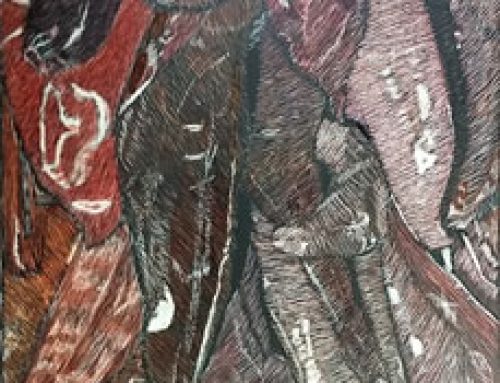Character Building
One topic that can get different writers into an argument concerns the relative importance of plot vs character. What’s more important: the events that happen in a story, or the characters and how they develop?
I started out as a plot is more important sort of guy, but now the scales tip more in the direction of character development. Not all the way… I still think how a story is constructed is important, but as I wrote more and more projects, I had to admit that I couldn’t give characters the short shrift. Why? The short answer is that well-plotted stories with under-developed characters are lifeless at best and formulaic at worst. Both of these lead to dull and boring stories, and that is the worst thing a writer can do. Never alienate your readers.
I could go into the same high-minded theory that a lot of books and articles do when they talk about this stuff. If you want to have that insight, seek out those sources. The plain truth is that great characters can survive a bad plot (though they won’t thrive), but a great plot can’t save stereotypical 1- and 2-dimensional characters. So, logic dictates that you put more concentrated effort into your characters. After all, people don’t connect emotionally to plot, but they do care about the plights of well-crafted characters.
The first key with characters is to make them distinct. Every character has their own point of view, their own reasons for why they act why they act. I don’t want you to miss the two most important words of the previous sentence: EVERY CHARACTER. Not just your main and supporting characters, but also every single person you deign to bring the reader’s attention to.
Let’s say you’re writing a scene at an ice rink. In addition to two of your main characters, a couple of dozen of variously aged people skate around. If you are only concerned about plot, you will likely only mention that other people are there, and then focus on the things your primary characters in the scene need to tend to. But… let’s say that you had small background stories for all of these people before you started writing the scene. Some would be there because they are flirting. Some are there because they just can’t let their dream of being a figure skater, or a hockey player, die. Some are there because they like people. Some are there because they live alone, and need to see people. Some like the cold air. Maybe half the group is just one family all scattered about. The next step, tie their background story with some personality. That muscular skinhead over there… is he looking for a victim, or is he basking in the joy of his daughter doing something well?
Seems like a lot of effort, doesn’t it? Well, it is. Even if you only write a sentence or two of background for each of these people in your notes, it’s still work. So why do this when we aren’t likely to see these characters again? Because you are going to be describing this scene. You are going to be describing what’s going on around your primary characters. Your characters might interact with these background people. Wouldn’t it be better for them to behave in character, acting and reacting to the world around them, instead of simply saying what you want them to say? Which do you think will seem more organic, more *real* to the reader?
Of course, there are limits. As a writer, your job is to find out where they are. In my view, if you are going to err on one side or the other, err on the side of doing at least a little background work on the ancillary characters. That said, here is an extremely important caveat: if you’ve done the work to fill-out your characters, don’t try to show off to the reader. You did this background stuff to help YOU, not to demonstrate how industrious you are. All of this should be transparent to the reader. All they should be noticing is how “alive” the scene seems to be; how “real”. If you throw away 99% of the work you did, that’s great — because the 1% you did use you probably used only because it worked.
Every story has its protagonists and antagonists. Sometimes, in a convoluted tale, any given character can be both depending on the circumstances. What’s important is that you make sure every character has an individual point of view. YOU have to know why a character is pursuing good actions or bad actions. Do the characters perceive them that way? Is your baddy killing the storekeeper out of inherent evilness, because he knows something kept secret about the shopkeeper’s past, or because in his personal code the store keeper had to die so that there are no witnesses — nothing personal. Did the knight rescue the village because it was the right thing to do, because he was bored and a good rescue was the perfect way to start off the day, or because it was the quickest way to be done with the quest and now he can go home?
Try not to make your characters all good or all evil. It’s questionable whether anyone, ever, has been totally on one extreme or the other. Good people get angry. Bad people care for family or friends or animals. Remember that you are creating characters that should jump from the page as “real”.
You can give characters interesting quirks/habits/interests. It makes them interesting. Don’t go overboard with this. If you do it too much it looks like you’re trying to give your characters quirks, etc. Sometimes it’s a simple as having someone flip a coin when they are bored. Other times it can be as incongruous as bad-ass cop John Spartan having been rehabbed with the skills of a seamstress. Don’t just do things to do things. Have a reason. Tie it to some of the action, or to other characters, or to the structure of the story (you know — the plot). The important thing is for it to fit within the character’s…well, character. If you aren’t sure, then take it out. If YOU aren’t believing it, your readers definitely won’t.
Remember that plot is like the banks of a river, while the characters are the water. From the quiet headwaters of the first page to the chaotic boil of the rapids far downstream at the climax, the two together shape each other. Characters alone are nothing more than a big puddle, while an empty plot is nothing but an arid gorge. Together, they make a story; both are important, but while water can carve new banks, the existing banks can’t create more water. Treat your characters with respect, let them run deep between the plot’s banks, and you’ll never be thirsty for a good story.
“And I’m sure this isn’t the last you’ll hear about characters from me,” he said before saving the file for posting to the hub; or…he said before putting down his pipe and calling Olaf, the storybook elf, to his side; or…he said before settling back in his overstuffed chair to stroke his increasingly needy cat; or…she said before tears, and yes, a few nose tears, dropped onto the paper; or…the little boy said before turning on his heels and running out of the house, pushing the spring-loaded screen door so wide that even Superman couldn’t prevent it from slamming shut; or…well, you get the picture. It’s the makeup of your characters that adds the depth to the story, so give your characters the depth they need.
Part of that depth comes from the characters not just being about words and doing. They also come from how characters perceive the world around them. (cf. Making Senses)






Your manner of writing is extremely unique in comparison to many other people out there. Appreciate publishing when you have the opportunity.